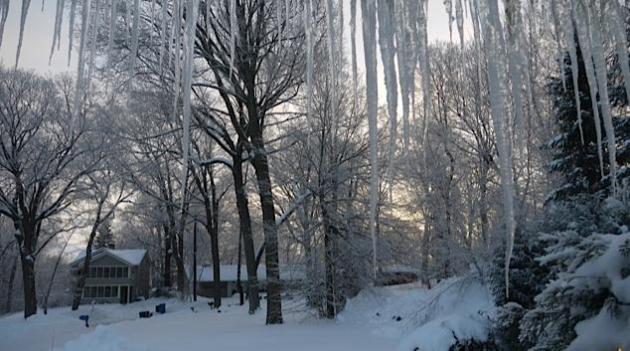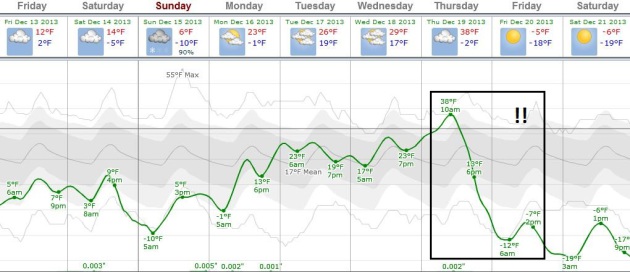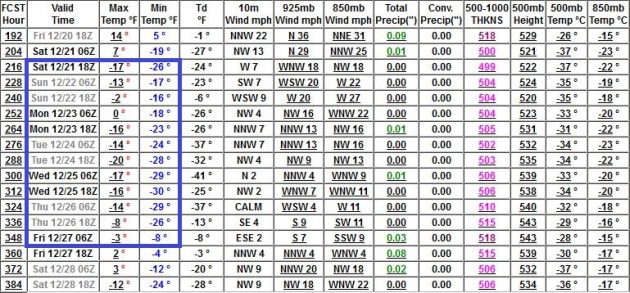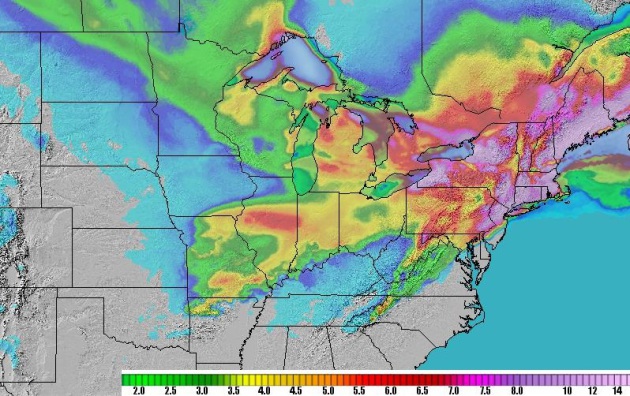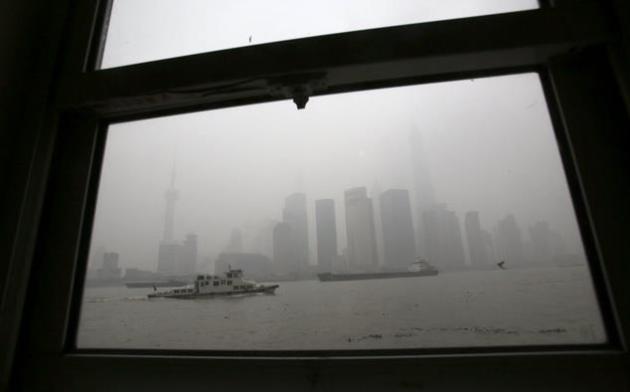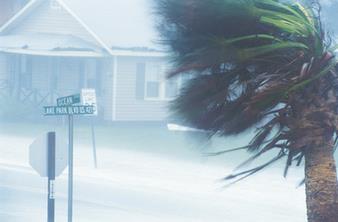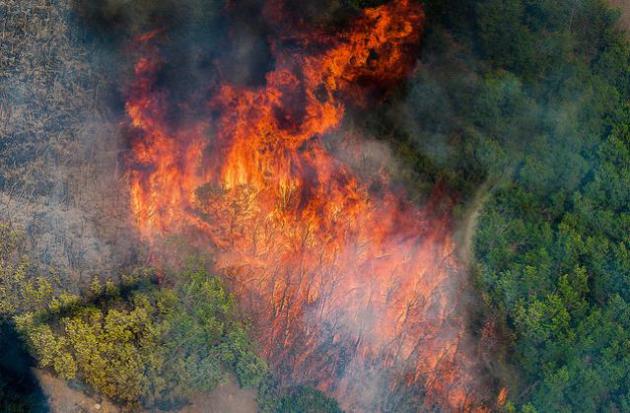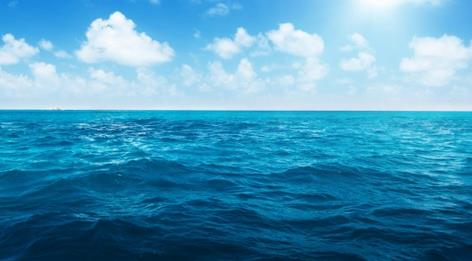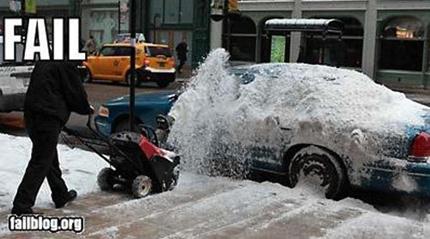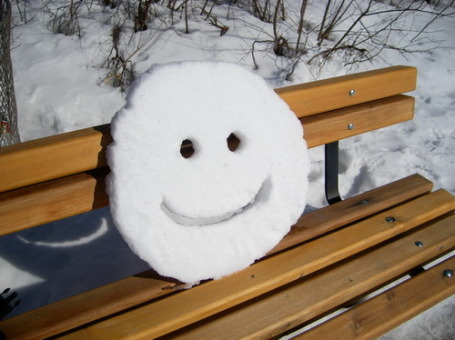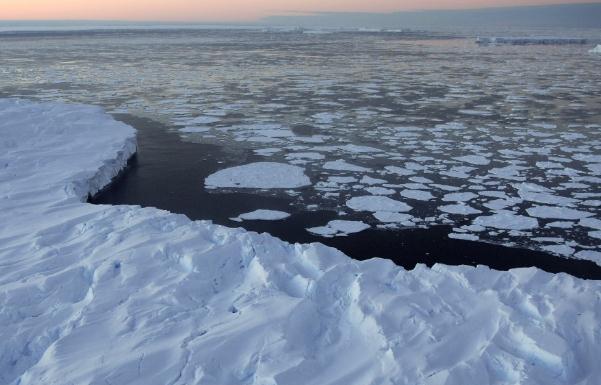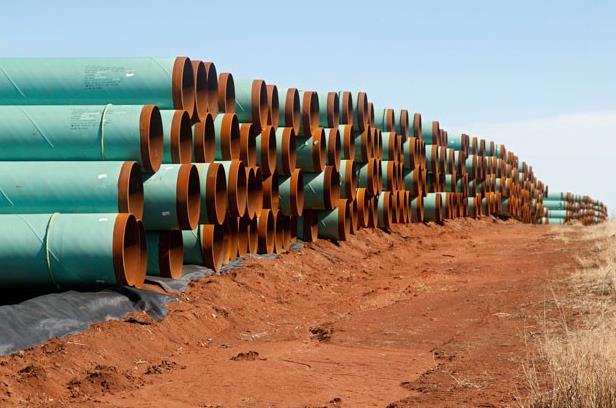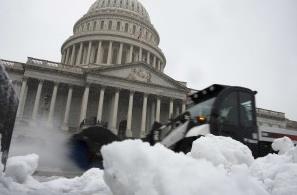Arctic Myths
This
confirms my theory that Minnesota's first settlers, the hardy fur
traders and homesteaders who migrated west, probably didn't arrive
during the winter. They must have set up those first camps during the
luxuriously buggy months of summer, then held on for dear life.
With
January coming early I wanted to dispel a few urban myths. 1). Cars
feel the windchill. Unlike people & pets most cars don't perspire.
It's the evaporation of sweat off your skin that has an additional
cooling effect. It's true that a strong wind will cool your vehicle's
engine block down to the air temperature faster. 2). Rub snow on
frostbite. Bad idea. You'll just make it worse. Warm the affected area
slowly and head to Urgent Care ASAP.
All this fresh, invigorating
arctic air has shoved the main superhighway for snowstorms well south
& east of Minnesota. A scrawny clipper may spark a coating of flakes
tomorrow.
I don't see any mega-dumpings between now and
Christmas. ECMWF guidance shows 20s early next week; a shot at 32F on
Wednesday. Woo hoo!
Steering winds buckle again, sending more
polar air into Minnesota next weekend. More fun with negative numbers. I
fear Santa's jingle bells may freeze up.
Slow Moderation - Jumping Off The Temperature Cliff Late Next Week?
ECMWF guidance shows temperatures trending upward (finally) next week;
20s will feel pretty good Monday into Wednesday, 30s Thursday before the
next cold wave pushes south of the border. Temperatures are forecast to
fall nearly 50 degrees next Thursday. Graphic: Weatherspark.
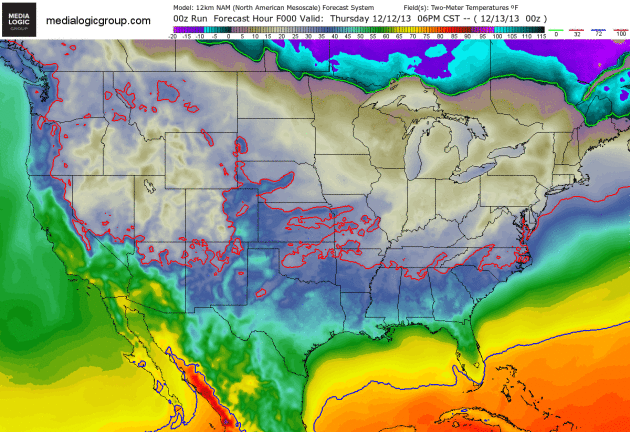 Sunday Punch
Sunday Punch.
After basking in the teens (never used those words in a sentence
before) another spike of cold air pushes south Sunday, before more
significant moderation much of next week. Watch the freezing line (solid
red) setting up just south of Philadelphia and New York, setting the
stage for a major snowfall in the Northeast this weekend. NAM model
guidance courtesy of NOAA and Ham Weather.
Record-Setting Cold Christmas Week?
It's still early, and I think the GFS is seriously over-doing the cold.
At least I pray that's the case. But subzero temperatures are possible,
even likely Christmas Week, within striking distance of setting a few
record low temperatures. Highs may be at or just below zero, nighttime
lows dipping down colder than -10 to -15F. A real winter this year? You
bet'cha.
A Very Significant Snowstorm For New England.
Latest guidance looks even more impressive for heavy snow late Saturday
into Sunday from New York City to Boston as a fast-moving wave of low
pressure tracks along the coast. I could see 4-8" of slushy, icy snow in
New York City, maybe 6-10" from Hartford and Providence to Boston by
Sunday. Meanwhile a Saturday clipper drops an inch of fluff on the Twin
Cities later tonight into Saturday, maybe 2" over parts of central and
northern Minnesota. Map: Ham Weather.
High-Resolution RPM Model.
WSI's in-house model shows very significant snow amounts from eastern
Pennsylvania and north Jersey into much of New England, a very plowable
snowfall event. If you're traveling to the Northeast this weekend rent
the vehicle with AWD. Source: WSI.
Potential For A Very White Christmas Over Much Of USA.
At the rate we're going, with more significant cold waves and snow
storms brewing between now and December 25, I have a hunch this
Christmas may be one of the 2 or 3 snowiest in 20 years for America.
That, and eye-popping amounts of lake effect snow, is the subject of
today's
Climate Matters: "
WeatherNationTV
Chief Meteorologist Paul Douglas goes over the almost 4 FEET of snow in
upstate New York after this latest snow band. How much snow has the
United States gotten as a whole? What are the chances of a snowy
Christmas?"
Powder Explosion. Check out the remarkable photos and interesting explanations at
Wasatch Weather Weenies.
Yes, there's great powder in upstate New York, 50"+ at North Redfield,
New York, and counting. Serious lake effect snows. Here's an excerpt of a
recent post: "...
We are now approaching 50 inches of snow since
yesterday morning (we might be over it, but I haven't checked the stake
in a couple of hours), most of it falling since 7 PM last night. We've
had little sleep and have had to work hard wading through snow,
shoveling, and taking observations. This is the most physically
exhausted I've ever been during field operations. However, we
absolutely nailed it today and all the teams from the various
universities and groups contributing to the OWLeS field program got an
unprecedented research dataset that should provide new insights into
lake-effect storms and their prediction..."
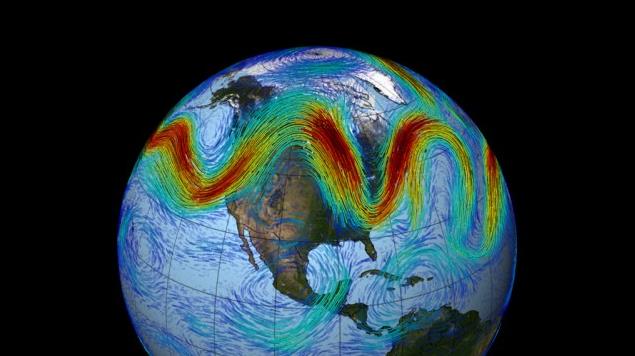 Melting Arctic Sea Ice Could Be Altering Jet Stream.
Melting Arctic Sea Ice Could Be Altering Jet Stream.
I've been talking about this since late 2012, when record melting of
arctic ice seemed to be having a ripple effect on the configuration and
speed of the jet stream at lower latitudes, a higher amplitude pattern
overall. Here's an excerpt from a story at
Ars Technica: "...
They
found modest correlations with the behavior of high-level winds and the
differences in atmospheric pressure that drive them, more so for sea
ice than snow cover. Over most regions, the average position of the jet
stream moved a little northward when summer sea ice was smaller, while
the opposite was true for the western edges of continents. The
high-level, west-to-east winds of the jet stream also slowed a bit.
Those two factors are consistent with the hypothesized link between sea
ice and weather extremes. When the jet stream slows, it gets wigglier,
with ponderous meanders extending north and south. Because the
temperature difference across the jet stream is so large, these
slow-moving excursions can lead to temperature extremes. The early loss
of snow cover can exacerbate this, as it means soils can dry out earlier
in the summer. Not only does that make a region susceptible to drought,
but low soil moisture allows temperatures to rise higher..." (Image: NASA, GSFC).
China Tells Pilots: Learn To Land In Smog. Just think of it as fog with attitude.
The Guardian has the story - here's a clip: "
Chinese
authorities have told pilots who fly to Beijing they must be qualified
to land their aircraft in the low visibility bought about by smog – the
latest missive related to the capital's heavy air pollution,
which the government this week lauded as a beneficial shield against
missile attacks. From 1 January pilots flying from the country's 10
busiest airports into the Chinese capital must be qualified to use an
instrument landing system on days when smog reduces visibility to around
400 metres (1,315 feet), the official China Daily said, citing China's civil aviation regulator..."
Photo credit above: "
The
skyline of the Lujiazui Financial District with the high-rise buildings
is covered with heavy smog in Pudong in Shanghai, China, Monday, Dec.
9, 2013. The dirty air that has gripped Shanghai and its neighboring
provinces for days is attributed to coal burning, car exhaust, factory
pollution and weather patterns, and is a stark reminder that pollution
is a serious challenge in China." (AP Photo/Eugene Hoshiko).
Natural Hazards At Record Low In 2013: CoreLogic. This is for the USA, not worldwide.
Property Casualty 360 has the story; here's an excerpt: "
Detailing
the impact of hurricanes, floods, tornadoes, wildfires and sinkhole
events that have occurred over the course of the year, CoreLogic
released its annual Natural Hazard Risk Summary and Analysis. The
report, which summarizes property and structure damage, geographic
impact and financial repercussions of natural disasters, revealed that
2013 experienced a record low number of natural hazard events. “Many
predicted that 2013 would be a record year of catastrophic destruction,”
said Dr. Thomas Jeffery, senior principal scientist for CoreLogic. “The
number of natural disasters that typically cause widespread
destruction—mainly hurricanes, wildfires and tornadoes—were far less
than anticipated and [were far less] compared to last year’s
record-setting hazard seasons...”
Wildfires Burn Less Land Than Average This Year. Emergency Management has the story - here's a clip: "...
Although
2013 was marked by two high-profile blazes, one in California and the
other in Arizona, nationally the total wildfire acreage of 4.15 million
is far below the 10-year average of 6.8 million acres. In California,
the number of wildfires was high but the amount of land that burned was
slightly less than the 10-year average, according to state and federal
figures. As always, weather was the deciding factor. The fierce Santa
Ana winds that can turn Southern California's autumn wildfires into
monsters didn't blow much this year. And in a perverse upside of parched
conditions elsewhere in the West, there wasn't enough moisture for
grassland fuel to grow, keeping blazes in check..."
Photo credit above: "
The East Peak Fire near La Veta, Colo., in June 2013." Colorado Air National Guard/Capt. Darin Overstreet.
Huge Reserves Of Freshwater Lie Beneath The Ocean Floor.
Kind of counterintuitive, but as reliable supplies of clean water
become harder to find, we may be forced to find new ways to keep the H2O
flowing. Here's an excerpt of a story at
Gizmag: "
Scientists
in Australia have reported the discovery of huge freshwater reserves
preserved in aquifers under the world's oceans. The water has remained
shielded from seawater thanks to the accumulation of a protective layer
of sediment and clay. And it’s not a local phenomenon. Such reserves are
to be found under continental shelves off Australia, China, North
America and South Africa..."
Photo credit: "
Scientists have found huge freshwater reserves under the world's oceans."(Photo:
Shutterstock).
5 Reasons Why 2013 Was The Best Year In Human History.
ThinkProgress makes a compelling case; here's an excerpt of an encouraging article: "...
In
short, fewer people are dying untimely deaths. And that’s not only true
in rich countries: life expectancy has gone up between 1990 and 2011 in
every WHO income bracket. The gains are even more dramatic if you take the long view: global life expectancy was 47 in the early 1950s, but had risen to 70
— a 50 percent jump — by 2011. For even more perspective, the average
Briton in 1850 — when the British Empire had reached its apex — was 40.
The average person today should expect to live almost twice as long as
the average citizen of the world’s wealthiest and most powerful country
in 1850. In real terms, this means millions of fewer dead adults and
children a year, millions fewer people who spend their lives suffering
the pains and unfreedoms imposed by illness, and millions more people
spending their twilight years with loved ones..."
Climate Stories....
We've Reached The Point Where Climate Change Deniers Need To Be Reminded That It Snows Every Year.
As climate scientists have said (repeatedly) over the years, if it ever
gets to the point where it doesn't snow anymore, where there are NO
cold fronts, we'll be well beyond the point of no return. Here's an
excerpt from
Huffington Post: "
Congressman Jared Huffman (D-Calif.) took to the House floor
Tuesday to remind his colleagues that a snowfall in December does not
disprove climate change, arguing rather "the fact that it is snowing
simply means that it's snowing." "You hear that because it is snowing,
there must not be climate change. Well, Mr. Speaker, winter happens
every year," Huffman said. Huffman went on to call claims posited by climate change deniers
"unscientific" and "reductive." He also pointed out that winter
temperatures have steadily increased an average of .55 degrees every
decade, "reducing snowpacks and creating water shortages across the
country..." (Photo credit: Star Tribune).
Antarctic Sea Ice Reached 35-Year Record High Saturday. If the atmosphere is warming, how can snow and ice be increasing across Antarctica?
The Capital Weather Gang has a good explanation; here's a clip from a recent story: "...
In a new study
in the Journal of Climate, Zhang finds both strengthening and
converging winds around the South Pole can explain 80 percent of the
increase in ice volume which has been observed. “The polar vortex that
swirls around the South Pole is not just stronger than it was when
satellite records began in the 1970s, it has more convergence, meaning
it shoves the sea ice together to cause ridging,” the study’s press release explains.
“Stronger winds also drive ice faster, which leads to still more
deformation and ridging. This creates thicker, longer-lasting ice, while
exposing surrounding water and thin ice to the blistering cold winds
that cause more ice growth...” (graph: NSIDC).
Sorry Climate Change Skeptics: Arctic Melting Trend Continues Despite Milder Year. Here's an excerpt from a
Huffington Post article: "...
This
is simply natural variability," said National Snow and Ice Data Center
director Mark Serreze, who wasn't part of the NOAA report but praised
it. "There is nothing about the year 2013 that provides any evidence
that the Arctic is starting a path toward recovery." He added: "Looking
back 20 years from now, the world will be warmer and we'll have much
less sea ice than today. We'll see that 2013 was just a temporary
respite." More ominous are long-term trends, NOAA's report card said.
Average
Arctic temperatures have increased 3.6 degrees since the 1960s, rising
twice as fast as the rest of the world. The growing season has
lengthened by nearly a month since 1982..."
Climate Change Is The Real Issue Behind Keystone. Here's an excerpt of an At The Edge post at
U.S. News and World Report: "...
Yet
it's a question that needs to be answered sooner rather than later now
that we know, with scientific certainty, that we only have a limited
amount of time in this generation - and a finite budget of carbon that
we can burn globally - before we tip the earth's climate system towards
an unstable and inhospitable state. The science question is settled. The
economic one isn't yet. This is the heart of the Keystone question.
It's not whether America wants to continue to shift its oil dependence
away from Saudi Arabia and Venezuela to its friendly neighbor to the
north. Of course we do. Six previous presidents, from both parties,
talked about American energy independence, and none delivered. Market
forces did. The U.S. is now a net oil exporter, and Tar Sands oil will
accelerate that development. The "energy independence" arguments around
Keystone are, to put it simply, grist for ad campaigns and propaganda.
Tar Sands isn't about energy independence – it's about money..."
Photo credit: "
Financial
analysts say the Tar Sands in Canada could meet the U.S.' energy needs
for the next 30 years if 170 billion barrels of oil are recovered."
Why GOP Climate Denialism Matters Less And Less. Here's an excerpt of an Op-Ed at
The Washington Post: "...
Despite Republicans’ feeble efforts to attack climate science, renewables are poised to take over the energy market. Here’s how:
1) The price of renewable energy is plummeting. Solar panels have shown the most staggering price decline: down 99% since the 70s, and down 60% since early 2011. Wind has been falling steadily as well, but not as fast.
2) U.S. renewable investment is skyrocketing. Here’s a representative fact: This year, the U.S. will probably beat Germany in total yearly installations. In some ways this isn’t so surprising — the U.S. is much larger, and German insolation is
comparable to Alaska — but on the other hand, Germany has been a world
leader in solar due to an extremely aggressive feed-in tariff policy.
Here’s another: last year, nearly 10 percent of Texas’s electricity was generated by wind..."
Photo credit above: "
Snow outside the Capitol! See? Climate denialists are right!" (AFP photo/ Jim Watson).
